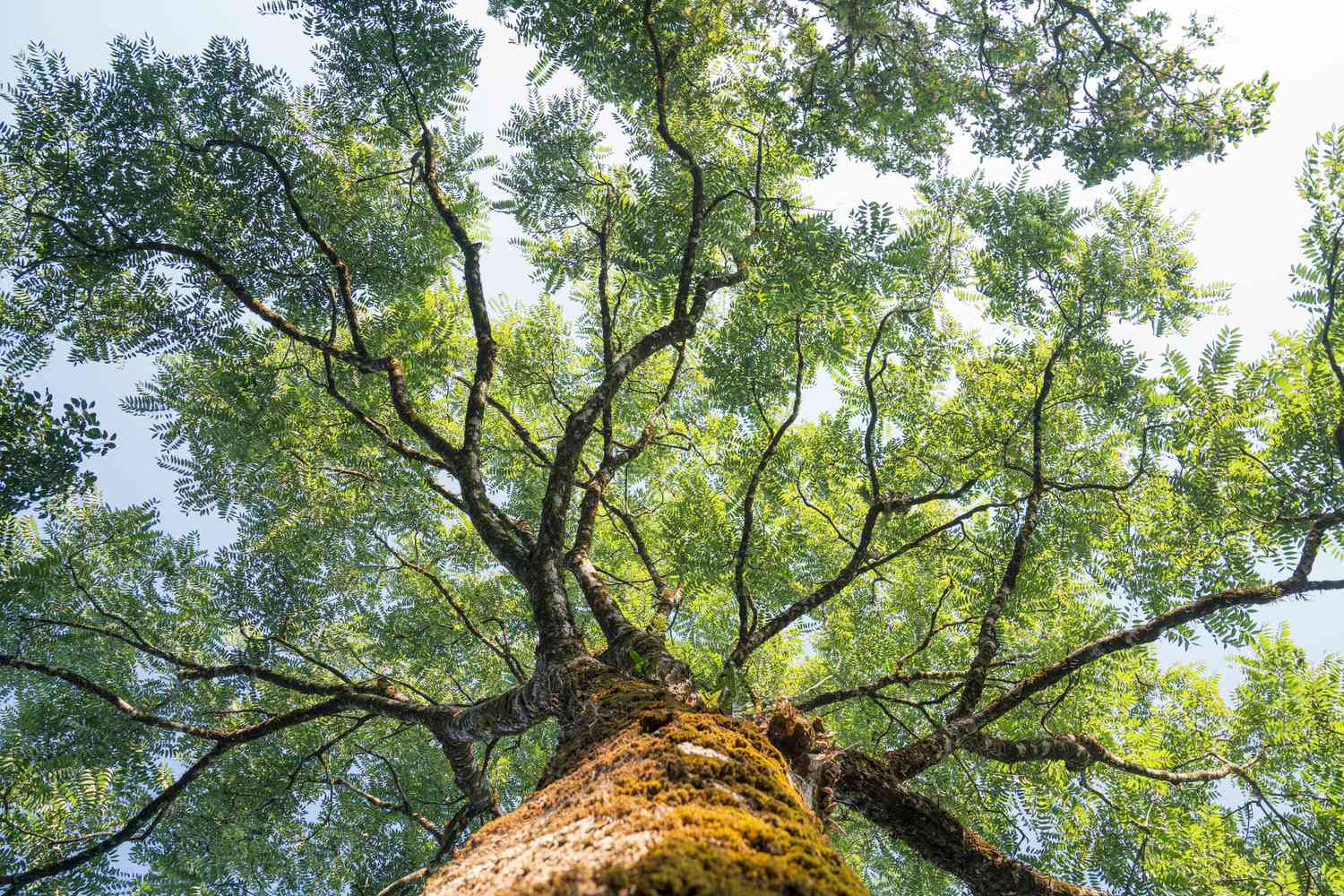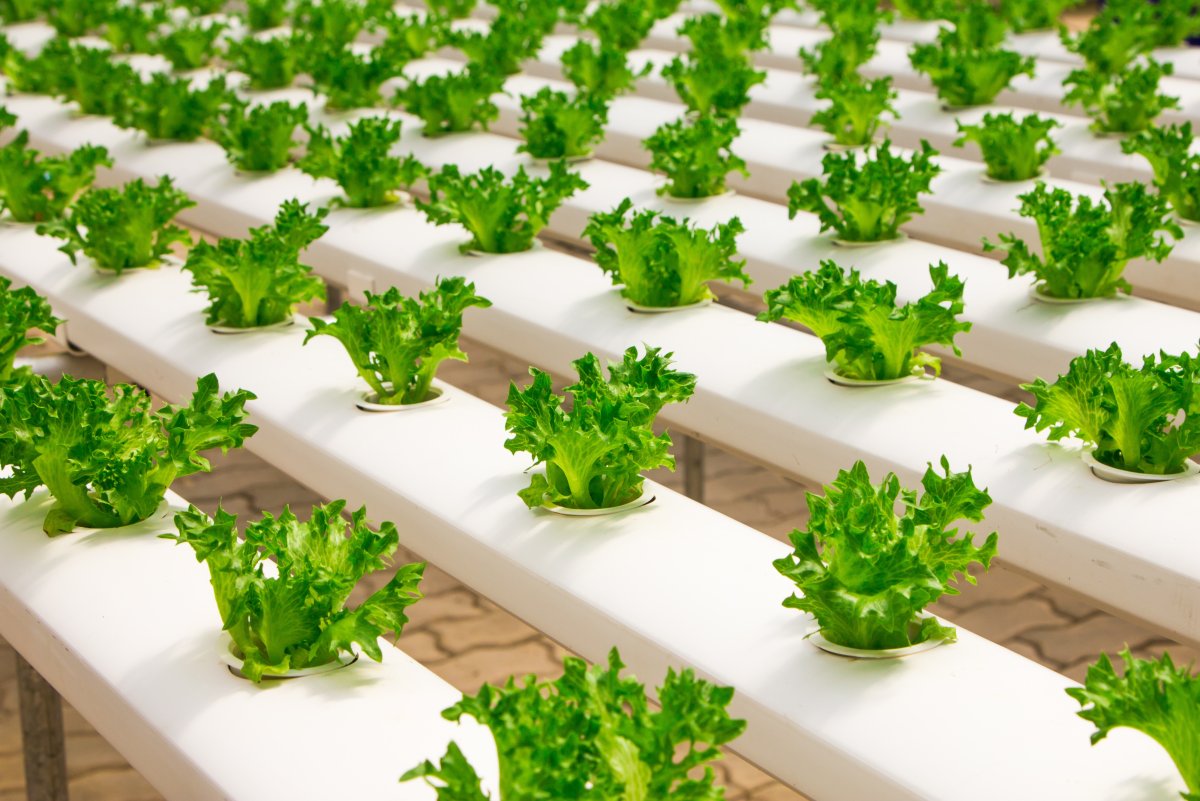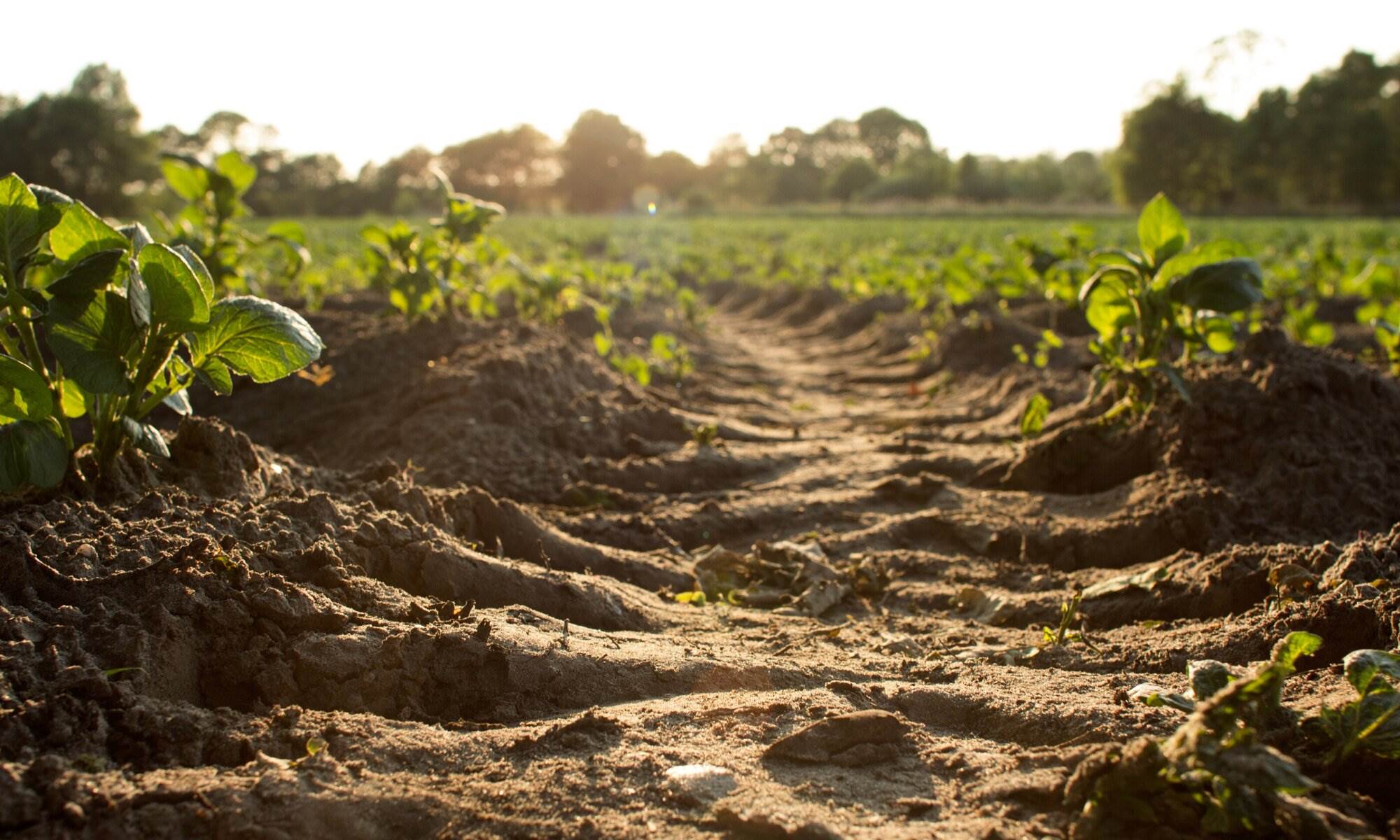Home>Gardening News and Trends>Latest News>Which Climate Region Is Shifting Cultivation Most Commonly Found


Latest News
Which Climate Region Is Shifting Cultivation Most Commonly Found
Published: January 25, 2024
Discover the latest news on the most commonly found climate region for shifting cultivation. Stay informed and learn about the shifting cultivation trends around the world.
(Many of the links in this article redirect to a specific reviewed product. Your purchase of these products through affiliate links helps to generate commission for Chicagolandgardening.com, at no extra cost. Learn more)
Table of Contents
Introduction
Shifting cultivation, also known as slash-and-burn agriculture, is a traditional method of farming that has been practiced for centuries by various indigenous communities around the world. This agricultural technique involves clearing a piece of land, burning the vegetation, and then planting crops in the nutrient-rich ash. After a few years, the land is left fallow, allowing it to naturally regenerate while the farmer moves on to clear a new area for cultivation. This cyclical process is integral to the livelihoods and cultural identities of many indigenous groups, shaping their social structures and spiritual beliefs.
Shifting cultivation is a dynamic and complex practice that is deeply intertwined with the environment and the communities that rely on it. While it has sustained livelihoods and fostered biodiversity in certain regions, it has also faced criticism for its potential environmental impact, particularly in the context of modern agricultural practices and land use. Understanding the climate regions where shifting cultivation is most commonly found is crucial for comprehending its significance and the challenges it presents in today's rapidly changing world.
This article aims to explore the climate regions where shifting cultivation is prevalent, delving into the historical, environmental, and cultural aspects of this traditional farming method. By examining its impact on different ecosystems and the communities that practice it, we can gain a deeper understanding of the complexities and implications associated with shifting cultivation.
Definition of Shifting Cultivation
Shifting cultivation, often referred to as swidden agriculture or slash-and-burn farming, is a traditional method of land cultivation that involves rotating the areas used for farming. This practice typically begins with the clearing of a section of forest or woodland, followed by the controlled burning of the vegetation. The ash from the burned vegetation provides essential nutrients to the soil, creating a fertile environment for planting crops. After a few years of cultivation, the land is left fallow, allowing natural regeneration to occur while the farmer moves on to clear a new area for cultivation.
Central to the concept of shifting cultivation is the cyclical nature of land use, as farmers continuously shift their agricultural activities from one plot of land to another. This rotational approach is rooted in the understanding that allowing the land to lie fallow helps restore its fertility and ecological balance over time. The specific duration of cultivation and fallow periods varies across different cultures and regions, influenced by factors such as soil fertility, climate, and traditional practices.
Shifting cultivation embodies a holistic relationship between humans and the environment, reflecting the deep understanding of local ecosystems and the sustainable use of natural resources. While it has been a cornerstone of subsistence farming for many indigenous communities, the increasing pressures of modernization and land development have led to debates about its long-term viability and ecological impact.
Understanding the fundamental principles and practices of shifting cultivation is essential for comprehending its historical significance, cultural relevance, and the challenges it poses in the context of contemporary agricultural and environmental dynamics.
History and Origins of Shifting Cultivation
The history and origins of shifting cultivation can be traced back to ancient agricultural practices that have sustained indigenous communities for generations. This traditional farming method has been deeply ingrained in the cultural heritage of various societies, shaping their relationships with the land and the natural world. The origins of shifting cultivation are intertwined with the historical development of human societies and their adaptive strategies for subsistence in diverse ecological settings.
Throughout history, shifting cultivation has been practiced in regions across the globe, including parts of Southeast Asia, Africa, South America, and Oceania. Indigenous communities have honed their knowledge of local ecosystems, weather patterns, and soil fertility, developing sustainable agricultural techniques that are attuned to the dynamic nature of their environments. These practices have been passed down through oral traditions, cultural rituals, and communal cooperation, fostering a deep sense of connection between people and the land they cultivate.
The historical roots of shifting cultivation reflect the resilience and resourcefulness of indigenous cultures in adapting to diverse climatic and environmental conditions. The cyclical nature of land use, characterized by alternating periods of cultivation and fallow, embodies a profound understanding of ecological balance and the long-term sustainability of agricultural systems.
As societies evolved and encountered external influences, the traditional practices of shifting cultivation faced challenges from colonial powers, modern agricultural policies, and land development initiatives. Despite these pressures, many indigenous communities have persevered in preserving their agricultural heritage, recognizing the intrinsic value of their traditional knowledge and its relevance in contemporary discussions on sustainable land use and conservation.
Exploring the history and origins of shifting cultivation provides valuable insights into the adaptive strategies of indigenous peoples, the cultural significance of traditional farming practices, and the enduring legacy of sustainable land management in diverse ecological landscapes.
Climate Regions Where Shifting Cultivation is Commonly Found
Shifting cultivation is commonly practiced in regions characterized by tropical and subtropical climates, where the environmental conditions are conducive to the traditional agricultural method. The prevalence of shifting cultivation is closely linked to the climatic factors that influence soil fertility, vegetation growth, and the agricultural calendar of indigenous communities. Understanding the specific climate regions where shifting cultivation thrives provides valuable insights into the ecological dynamics and cultural significance of this traditional farming practice.
Tropical rainforests, with their rich biodiversity and high levels of precipitation, are prime areas for shifting cultivation. The dense vegetation and fertile soils of these regions provide an ideal setting for the rotational farming approach, allowing farmers to harness the natural fertility of the land while maintaining the ecological balance through fallow periods. The humid, equatorial climate of tropical rainforests supports the regenerative capacity of the land, enabling sustainable agricultural cycles that have sustained indigenous communities for centuries.
In addition to rainforests, shifting cultivation is also prevalent in regions with tropical savannas and monsoon climates. The seasonal variations in precipitation and temperature create dynamic agricultural landscapes where farmers adapt their cultivation practices to the changing environmental conditions. The interplay of wet and dry seasons influences the timing of clearing, burning, and planting, aligning with the traditional knowledge and ecological awareness of indigenous groups.
Subtropical regions, characterized by distinct wet and dry seasons, also provide suitable environments for shifting cultivation. The cyclical nature of rainfall and temperature variations shapes the agricultural calendar of communities practicing shifting cultivation, allowing them to synchronize their farming activities with the natural rhythms of the environment. The ability to anticipate and respond to climatic patterns is integral to the success of shifting cultivation in subtropical regions.
By examining the climate regions where shifting cultivation is commonly found, we gain a deeper appreciation for the intricate relationship between traditional farming practices and the ecological dynamics of specific geographic areas. The adaptability of shifting cultivation to diverse climatic conditions underscores its resilience and relevance in sustaining livelihoods and preserving cultural heritage in the face of environmental change.
Environmental Impact of Shifting Cultivation
Shifting cultivation, while deeply rooted in the traditions and livelihoods of indigenous communities, has elicited discussions regarding its environmental impact, particularly in the context of contemporary conservation and land management practices. The agricultural method’s influence on biodiversity, soil health, and forest ecosystems has been the subject of scrutiny and debate, highlighting the complex interplay between traditional farming practices and environmental sustainability.
One of the key environmental impacts of shifting cultivation is its potential to foster biodiversity. By allowing land to lie fallow and regenerate naturally, shifting cultivation can contribute to the preservation of diverse plant species and the habitats of various wildlife. The mosaic landscapes created by the rotational farming approach may enhance ecological resilience and support a range of flora and fauna, enriching the overall biodiversity of the region.
However, the clearing of land and the use of controlled burns in shifting cultivation can also lead to deforestation and habitat fragmentation, affecting the integrity of forest ecosystems. The conversion of natural forest areas into agricultural plots may disrupt the interconnected web of species and ecological processes, posing challenges for conservation efforts and the maintenance of ecosystem services.
Soil erosion and degradation are additional environmental concerns associated with shifting cultivation. Intensive land clearing and the absence of permanent ground cover during cultivation phases can leave the soil vulnerable to erosion, especially in regions with steep terrain and heavy rainfall. The loss of soil fertility and the potential for sediment runoff into waterways are significant considerations in assessing the environmental sustainability of shifting cultivation practices.
The carbon dynamics of shifting cultivation also warrant attention in the context of climate change and carbon sequestration. The release of carbon dioxide from the burning of vegetation and the impact on soil organic matter during cultivation phases contribute to the carbon footprint of shifting cultivation. Balancing these emissions with the regenerative capacity of fallow periods and the potential for carbon sequestration in recovering forests is a critical aspect of evaluating the environmental implications of the traditional farming method.
Understanding the environmental impact of shifting cultivation requires a nuanced examination of its effects on biodiversity, soil health, carbon dynamics, and the broader ecological landscape. By acknowledging both the potential benefits and challenges associated with this traditional farming practice, we can engage in informed discussions on sustainable land use and the conservation of natural resources.
Conclusion
Exploring the climate regions where shifting cultivation is prevalent provides valuable insights into the intricate relationship between traditional farming practices and the environmental dynamics of specific geographic areas. The historical and cultural significance of shifting cultivation, deeply rooted in the traditions and livelihoods of indigenous communities, underscores its resilience and relevance in sustaining livelihoods and preserving cultural heritage in the face of environmental change.
The cyclical nature of land use, characterized by alternating periods of cultivation and fallow, embodies a profound understanding of ecological balance and the long-term sustainability of agricultural systems. While shifting cultivation has faced criticism for its potential environmental impact, particularly in the context of modern agricultural practices and land use, it is essential to acknowledge the traditional knowledge and adaptive strategies of indigenous communities in managing diverse ecosystems.
The environmental impact of shifting cultivation encompasses a complex interplay of factors, including its influence on biodiversity, soil health, forest ecosystems, and carbon dynamics. The potential for fostering biodiversity and supporting ecological resilience through the mosaic landscapes created by shifting cultivation underscores the importance of recognizing the nuanced environmental implications of traditional farming practices.
As discussions on sustainable land use, conservation, and climate change continue to evolve, it is crucial to engage in informed dialogues that consider the historical, cultural, and environmental dimensions of shifting cultivation. By acknowledging both the potential benefits and challenges associated with this traditional farming method, we can work towards holistic approaches to land management that integrate traditional ecological knowledge with contemporary conservation practices.
Ultimately, the climate regions where shifting cultivation thrives serve as living laboratories of sustainable land management, offering valuable lessons in resilience, adaptation, and the coexistence of human communities with the natural world. Embracing the complexities and nuances of shifting cultivation can enrich our understanding of the diverse ways in which cultures interact with and steward the environment, paving the way for collaborative efforts to support the sustainable practices of indigenous communities and the preservation of our planet’s ecological diversity.






